 W
WRadio propagation is the behavior of radio waves as they travel, or are propagated, from one point to another, or into various parts of the atmosphere. As a form of electromagnetic radiation, like light waves, radio waves are affected by the phenomena of reflection, refraction, diffraction, absorption, polarization, and scattering. Understanding the effects of varying conditions on radio propagation has many practical applications, from choosing frequencies for international shortwave broadcasters, to designing reliable mobile telephone systems, to radio navigation, to operation of radar systems.
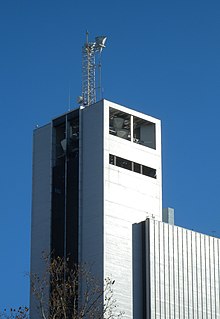 W
WAntenna diversity, also known as space diversity or spatial diversity, is any one of several wireless diversity schemes that uses two or more antennas to improve the quality and reliability of a wireless link. Often, especially in urban and indoor environments, there is no clear line-of-sight (LOS) between transmitter and receiver. Instead the signal is reflected along multiple paths before finally being received. Each of these bounces can introduce phase shifts, time delays, attenuations, and distortions that can destructively interfere with one another at the aperture of the receiving antenna.
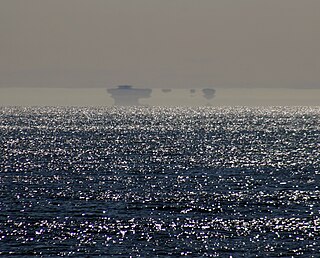 W
WIn telecommunications, an atmospheric duct is a horizontal layer in the lower atmosphere in which the vertical refractive index gradients are such that radio signals are guided or ducted, tend to follow the curvature of the Earth, and experience less attenuation in the ducts than they would if the ducts were not present. The duct acts as an atmospheric dielectric waveguide and limits the spread of the wavefront to only the horizontal dimension.
 W
WThe Cassegrain reflector is a combination of a primary concave mirror and a secondary convex mirror, often used in optical telescopes and radio antennas, the main characteristic being that the optical path folds back onto itself, relative to the optical system's primary mirror entrance aperture. This design puts the focal point at a convenient location behind the primary mirror and the convex secondary adds a telephoto effect creating a much longer focal length in a mechanically short system.
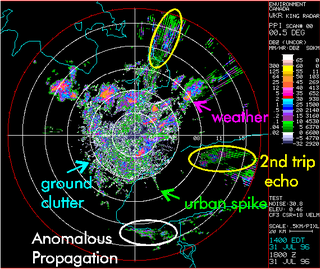 W
WClutter is a term used for unwanted echoes in electronic systems, particularly in reference to radars. Such echoes are typically returned from ground, sea, rain, animals/insects, chaff and atmospheric turbulences, and can cause serious performance issues with radar systems.
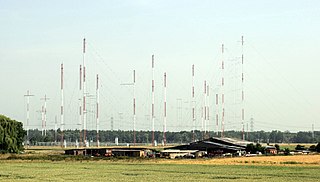 W
WCurtain arrays are a class of large multielement directional wire radio transmitting antennas, used in the shortwave radio bands. They are a type of reflective array antenna, consisting of multiple wire dipole antennas, suspended in a vertical plane, often in front of a "curtain" reflector made of a flat vertical screen of many long parallel wires. These are suspended by support wires strung between pairs of tall steel towers, up to 300 ft (90 m) high. They are used for long-distance skywave transmission; they transmit a beam of radio waves at a shallow angle into the sky just above the horizon, which is reflected by the ionosphere back to Earth beyond the horizon. Curtain antennas are mostly used by international short wave radio stations to broadcast to large areas at transcontinental distances.
 W
WA directional antenna or beam antenna is an antenna which radiates or receives greater power in specific directions allowing increased performance and reduced interference from unwanted sources. Directional antennas provide increased performance over dipole antennas—or omnidirectional antennas in general—when greater concentration of radiation in a certain direction is desired.
 W
WIn navigation, a radio beacon is a kind of beacon, a device that marks a fixed location and allows direction-finding equipment to find relative bearing. Radio beacons transmit a radio signal that is picked up by radio direction-finding systems on ships, aircraft and vehicles to determine the direction to the beacon.
 W
WElectromagnetic radio frequency (RF) convergence is a signal-processing paradigm that is utilized when several RF systems have to share a finite amount of resources among each other. RF convergence indicates the ideal operating point for the entire network of RF systems sharing resources such that the systems can efficiently share resources in a manner that's mutually beneficial. With communications spectral congestion recently becoming an increasingly important issue for the telecommunications sector, researchers have begun studying methods of achieving RF convergence for cooperative spectrum sharing between remote sensing systems and communications systems. Consequentially, RF convergence is commonly referred to as the operating point of a remote sensing and communications network at which spectral resources are jointly shared by all nodes of the network in a mutually beneficial manner. Remote sensing and communications have conflicting requirements and functionality. Furthermore, spectrum sharing approaches between remote sensing and communications have traditionally been to separate or isolate both systems. This results in stove pipe designs that lack back compatibility. Future of hybrid RF systems demand co-existence and cooperation between sensibilities with flexible system design and implementation. Hence, achieving RF convergence can be an incredibly complex and difficult problem to solve. Even for a simple network consisting of one remote sensing and communications system each, there are several independent factors in the time, space, and frequency domains that have to be taken into consideration in order to determine the optimal method to share spectral resources. For a given spectrum-space-time resource manifold, a practical network will incorporate numerous remote sensing modalities and communications systems, making the problem of achieving RF convergence intangible.
 W
WIn physics, telecommunications, and astronomy, forward scatter is the deflection—by diffraction, nonhomogeneous refraction, or nonspecular reflection by particulate matter of dimensions that are large with respect to the wavelength in question but small with respect to the beam diameter—of a portion of an incident electromagnetic wave, in such a manner that the energy so deflected propagates in a direction that is within 90° of the direction of propagation of the incident wave.
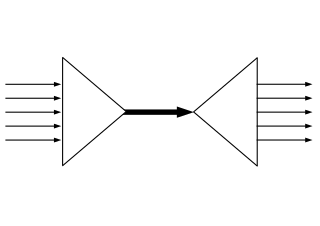 W
WFrequency-hopping spread spectrum (FHSS) is a method of transmitting radio signals by rapidly changing the carrier frequency among many distinct frequencies occupying a large spectral band. The changes are controlled by a code known to both transmitter and receiver. FHSS is used to avoid interference, to prevent eavesdropping, and to enable code-division multiple access (CDMA) communications.
 W
WA Fresnel zone, named after physicist Augustin-Jean Fresnel, is one of a series of confocal prolate ellipsoidal regions of space between and around a transmitter and a receiver. Transmitted radio, sound, or light waves can follow slightly different paths before reaching a receiver, especially if there are obstructions or reflecting objects between the two. The waves can arrive at slightly different times and will be slightly out of phase due to the different path lengths. Depending on the magnitude of the phase shift, the waves can interfere constructively or destructively. The size of the calculated Fresnel zone at any particular distance from the transmitter and receiver can help to predict whether obstructions or discontinuities along the path will cause significant interference.
 W
WThe Friis transmission formula is used in telecommunications engineering, equating the power at the terminals of a receive antenna as the product of power density of the incident wave and the effective aperture of the receiving antenna under idealized conditions given another antenna some distance away transmitting a known amount of power. The formula was presented first by Danish-American radio engineer Harald T. Friis in 1946. The formula is sometimes referenced as the Friis transmission equation.
 W
WIn physics, a surface wave is a mechanical wave that propagates along the interface between differing media. A common example is gravity waves along the surface of liquids, such as ocean waves. Gravity waves can also occur within liquids, at the interface between two fluids with different densities. Elastic surface waves can travel along the surface of solids, such as Rayleigh or Love waves. Electromagnetic waves can also propagate as "surface waves" in that they can be guided along with a refractive index gradient or along an interface between two media having different dielectric constants. In radio transmission, a ground wave is a guided wave that propagates close to the surface of the Earth.
 W
WThe group velocity of a wave is the velocity with which the overall envelope shape of the wave's amplitudes—known as the modulation or envelope of the wave—propagates through space.
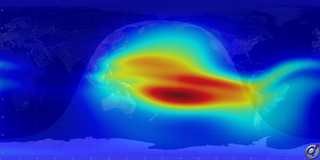 W
WInternational Reference Ionosphere (IRI) is a common permanent scientific project of the Committee on Space Research (COSPAR) and the International Union of Radio Science (URSI) started 1968/69. It is the international standard empirical model for the terrestrial ionosphere since 1999. For a specified geographic location, time, and date, IRI provides average monthly values for electron density, electron temperature and ion temperature, and the molecular composition of the ions in the range of altitudes from 50 km to 2000 km. The latest standard is IRI-2012. A new version, IRI-2016, has since been released. The IRI has been extended to plasmasphere in the IRI-Plas model.
 W
WIn meteorology, an inversion, also known as a temperature inversion, is a deviation from the normal change of an atmospheric property with altitude. It almost always refers to an inversion of the thermal lapse rate. Normally, air temperature decreases with an increase in altitude. During an inversion, warmer air is held above cooler air; the normal temperature profile with altitude is inverted.
 W
WThe ionosphere is the ionized part of Earth's upper atmosphere, from about 48 km (30 mi) to 965 km (600 mi) altitude, a region that includes the thermosphere and parts of the mesosphere and exosphere. The ionosphere is ionized by solar radiation. It plays an important role in atmospheric electricity and forms the inner edge of the magnetosphere. It has practical importance because, among other functions, it influences radio propagation to distant places on the Earth.
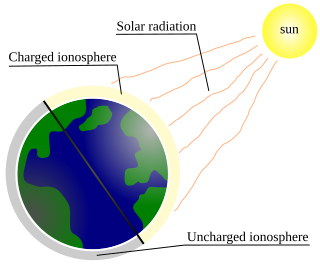 W
WIonospheric absorption is the scientific name for absorption occurring as a result of the interaction between various types of electromagnetic waves and the free electrons in the ionosphere, which can interfere with radio transmissions.
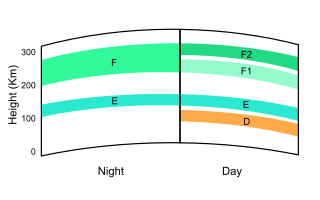 W
WThe Heaviside layer, sometimes called the Kennelly–Heaviside layer, named after Arthur E. Kennelly and Oliver Heaviside, is a layer of ionised gas occurring between roughly 90 and 150 km above the ground — one of several layers in the Earth's ionosphere. It is also known as the E region. It reflects medium-frequency radio waves. Because of this reflective layer, radio waves radiated into the sky can return to Earth beyond the horizon. This "skywave" or "skip" propagation technique has been used since the 1920s for radio communication at long distances, up to transcontinental distances.
 W
WLine-of-sight propagation is a characteristic of electromagnetic radiation or acoustic wave propagation which means waves travel in a direct path from the source to the receiver. Electromagnetic transmission includes light emissions traveling in a straight line. The rays or waves may be diffracted, refracted, reflected, or absorbed by the atmosphere and obstructions with material and generally cannot travel over the horizon or behind obstacles.
 W
WMercury Systems, Inc. is an American multinational Tier 2 aerospace and defense technology company. It develops and manufactures computer hardware and software products including embedded processing modules and subsystems, avionics mission computers, rugged computer servers, and radio frequency (“RF”) and microwave components, modules, and subsystems.It serves customers in the aerospace, commercial aviation, defense, and security and intelligence industries.
 W
WMeteor burst communications (MBC), also referred to as meteor scatter communications, is a radio propagation mode that exploits the ionized trails of meteors during atmospheric entry to establish brief communications paths between radio stations up to 2,250 kilometres (1,400 mi) apart.
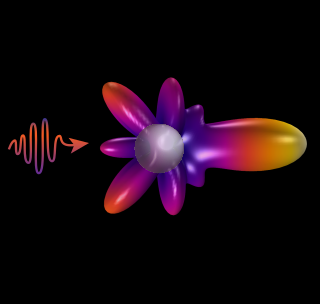 W
WThe Mie solution to Maxwell's equations describes the scattering of an electromagnetic plane wave by a homogeneous sphere. The solution takes the form of an infinite series of spherical multipole partial waves. It is named after Gustav Mie.
 W
WNew Horizons is an interplanetary space probe that was launched as a part of NASA's New Frontiers program. Engineered by the Johns Hopkins University Applied Physics Laboratory (APL) and the Southwest Research Institute (SwRI), with a team led by S. Alan Stern, the spacecraft was launched in 2006 with the primary mission to perform a flyby study of the Pluto system in 2015, and a secondary mission to fly by and study one or more other Kuiper belt objects (KBOs) in the decade to follow, which became a mission to 486958 Arrokoth. It is the fifth space probe to achieve the escape velocity needed to leave the Solar System.
 W
WThe North Atlantic Radio System (NARS) was a chain of 5 tropospheric scatter communication sites. It was an expansion of the former Distant Early Warning Line. NARS has been built for the United States Air Force (USAF) by Western Electric (AT&T) and its sites were maintained under contract by ITT Federal Electric Corporation. All NARS stations were supervised and controlled by the USAF, by agreement with the Canadian and Danish Governments.
 W
WRadar angels are an effect seen on radar displays when there is a periodic structure in the view of the radar that is roughly the same length as the signal's wavelength. The angel appears to be a physically huge object on the display, often miles across, that can obscure real targets. These were first noticed in the 1940s and were a topic of considerable study in the 1950s. The underlying mechanism is due to Bragg's law.
 W
WKarl Maria Alois Rawer was a German specialist in radio wave propagation and the ionosphere. He developed the analytical code to determine suitable frequency ranges for short wave communication by which German forces built-up their long distance communications during World War II.
 W
WShortwave relay stations are transmitter sites used by international broadcasters to extend their coverage to areas that cannot be reached easily from their home state. E.g., the BBC operates an extensive net of relay stations.
 W
WIn antenna engineering, side lobes or sidelobes are the lobes of the far field radiation pattern of an antenna or other radiation source, that are not the main lobe.
 W
WThe six-rays model is applied in an urban or indoor environment where a radio signal transmitted will encounter some objects that produce reflected, refracted or scattered copies of the transmitted signal. These are called multipath signal components, they are attenuated, delayed and shifted from the original signal (LOS) due to a finite number of reflectors with known location and dielectric properties, LOS and multipath signal are summed at the receiver.
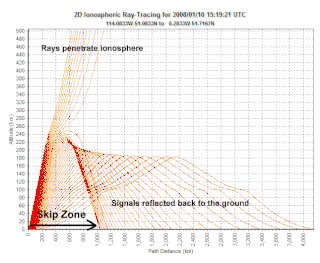 W
WA skip zone, also called a silent zone or zone of silence, is a region where a radio transmission can not be received. The zone is located between regions both closer and farther from the transmitter where reception is possible.
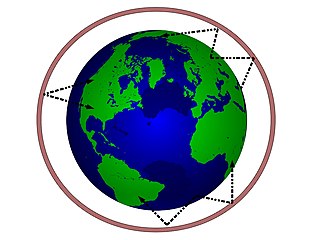 W
WIn radio communication, skywave or skip refers to the propagation of radio waves reflected or refracted back toward Earth from the ionosphere, an electrically charged layer of the upper atmosphere. Since it is not limited by the curvature of the Earth, skywave propagation can be used to communicate beyond the horizon, at intercontinental distances. It is mostly used in the shortwave frequency bands.
 W
WThe Southern Hemisphere Auroral Radar Experiment (SHARE), started 1988, is an Antarctic research project designed to observe velocities and irregularities of electrical fields in the ionosphere and magnetosphere. SHARE is operated jointly by the University of Natal, Potchefstroom University, the British Antarctic Survey and Johns Hopkins University and operates out of British Halley Station, South African SANAE IV Station and Japanese Showa Station.
 W
WSpace weather is a branch of space physics and aeronomy, or heliophysics, concerned with the time varying conditions within the Solar System, including the solar wind, emphasizing the space surrounding the Earth, including conditions in the magnetosphere, ionosphere, thermosphere, and exosphere. Space weather is distinct from but conceptually related to the terrestrial weather of the atmosphere of Earth. The term space weather was first used in the 1950s and came into common usage in the 1990s.
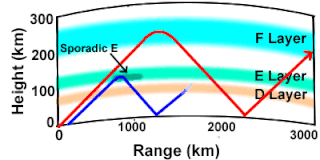 W
WSporadic E or Es is an unusual form of radio propagation using characteristics of the Earth's ionosphere. Whereas most forms of skywave propagation use the normal and cyclic ionization properties of the ionosphere's F region to refract radio signals back toward the Earth's surface, sporadic E propagation bounces signals off smaller "clouds" of unusually ionized atmospheric gas in the lower E region. This occasionally allows for long-distance communication at VHF frequencies not usually well-suited to such communication.
 W
WIn physics, a surface wave is a mechanical wave that propagates along the interface between differing media. A common example is gravity waves along the surface of liquids, such as ocean waves. Gravity waves can also occur within liquids, at the interface between two fluids with different densities. Elastic surface waves can travel along the surface of solids, such as Rayleigh or Love waves. Electromagnetic waves can also propagate as "surface waves" in that they can be guided along with a refractive index gradient or along an interface between two media having different dielectric constants. In radio transmission, a ground wave is a guided wave that propagates close to the surface of the Earth.
 W
WA television antenna is an antenna specifically designed for use with a television receiver (TV) to receive over-the-air broadcast television signals from a television station. Terrestrial television is broadcast on frequencies from about 47 to 250 MHz in the very high frequency (VHF) band, and 470 to 960 MHz in the ultra high frequency (UHF) band in different countries. Television antennas are manufactured in two different types: "indoor" antennas, to be located on top of or next to the television set, and "outdoor" antennas, mounted on a mast on top of the owner's house. They can also be mounted in a loft or attic, where the dry conditions and increased elevation are advantageous for reception and antenna longevity. Outdoor antennas are more expensive and difficult to install, but are necessary for adequate reception in fringe areas far from television stations. The most common types of indoor antennas are the dipole and loop antennas, and for outdoor antennas the yagi, log periodic, and for UHF channels the multi-bay reflective array antenna.
 W
WThe ten-rays model is a mathematical model applied to the transmissions of radio signal in an urban area,
 W
WTropospheric scatter is a method of communicating with microwave radio signals over considerable distances – often up to 300 kilometres (190 mi), and further depending on terrain and climate factors. This method of propagation uses the tropospheric scatter phenomenon, where radio waves at UHF and SHF frequencies are randomly scattered as they pass through the upper layers of the troposphere. Radio signals are transmitted in a narrow beam aimed just above the horizon in the direction of the receiver station. As the signals pass through the troposphere, some of the energy is scattered back toward the Earth, allowing the receiver station to pick up the signal.
 W
WThe two-rays ground-reflection model is a multipath radio propagation model which predicts the path losses between a transmitting antenna and a receiving antenna when they are in line of sight (LOS). Generally, the two antenna each have different height. The received signal having two components, the LOS component and the reflection component formed predominantly by a single ground reflected wave.
 W
WVOACAP is a radio propagation model that uses empirical data to predict the point-to-point path loss and coverage of a given transceiver if given as inputs: two antennas, solar weather, and time/date. Written in Fortran, it was originally designed for Voice of America.
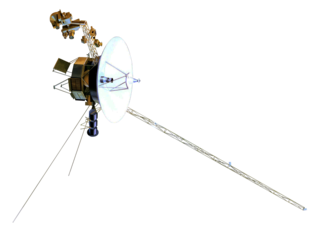 W
WVoyager 1 is a space probe that was launched by NASA on September 5, 1977. Part of the Voyager program to study the outer Solar System, Voyager 1 was launched 16 days after its twin, Voyager 2. Having operated for 43 years, 4 months and 1 day as of January 7, 2021 UTC [refresh], the spacecraft still communicates with the Deep Space Network to receive routine commands and to transmit data to Earth. Real-time distance and velocity data is provided by NASA and JPL. At a distance of 152.1 AU from Earth as of December 11, 2020, it is the most distant human-made object from Earth ⊕.
 W
WVoyager 2 is a space probe launched by NASA on August 20, 1977, to study the outer planets. A part of the Voyager program, it was launched 16 days before its twin, Voyager 1, on a trajectory that took longer to reach Jupiter and Saturn but enabled further encounters with Uranus and Neptune. It is the only spacecraft to have visited either of these two ice giant planets. Voyager 2 is the fourth of five spacecraft to achieve the Solar escape velocity, which will allow it to leave the Solar System.
 W
WThe White Alice Communications System was a United States Air Force telecommunication network with 80 radio stations constructed in Alaska during the Cold War. It used tropospheric scatter for over-the-horizon links and microwave relay for shorter line-of-sight links. Sites were characterized by large parabolic, tropospheric scatter antennas as well as smaller microwave dishes for point to point links.